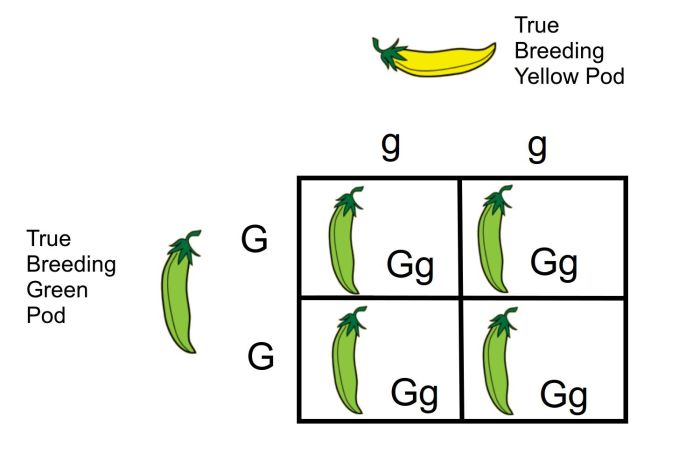Learning through art monohybrid cross is an innovative approach that transforms the study of genetics into a captivating and immersive experience. By harnessing the power of visual representations, this approach empowers students to grasp complex concepts with greater ease and depth.
Visualizing monohybrid crosses through art unlocks a world of possibilities. Diagrams, simulations, and animations bring these genetic principles to life, making them tangible and relatable. These art forms not only enhance understanding but also foster creativity and engagement.
Learning through Art: Monohybrid Crosses: Learning Through Art Monohybrid Cross

The concept of a monohybrid cross is a fundamental principle in genetics that involves the inheritance of a single trait. By understanding the principles of monohybrid crosses, we can gain insights into how traits are passed from one generation to the next.
Monohybrid Cross Basics
A monohybrid cross is a mating between two individuals that differ in only one gene. This allows us to study the inheritance of a single trait, such as eye color or height. The Punnett square is a tool that can be used to predict the offspring genotypes and phenotypes in a monohybrid cross.
Learning through Art: Visualizing Monohybrid Crosses
Visual representations can greatly enhance the understanding of monohybrid crosses. Diagrams, simulations, and animations can help students visualize the process of inheritance and the different possible outcomes.
| Art Form | Description |
|---|---|
| Diagrams | Static representations that illustrate the steps of a monohybrid cross, including the genotypes and phenotypes of the parents and offspring. |
| Simulations | Interactive representations that allow users to input different genotypes and observe the resulting offspring. |
| Animations | Dynamic representations that show the process of inheritance in real time, providing a more engaging and immersive learning experience. |
Interactive Art Experiences, Learning through art monohybrid cross
Interactive art activities can foster hands-on learning and deeper comprehension of monohybrid crosses. One example is to create a game where students simulate a monohybrid cross using colored beads or blocks. By physically manipulating the beads, students can better understand the principles of inheritance.
Art-Infused Lesson Plans
Art can be incorporated into lesson plans to teach monohybrid crosses in a more engaging and memorable way. A lesson plan could include:
- Objectives: Students will understand the concept of a monohybrid cross, be able to use a Punnett square to predict offspring genotypes and phenotypes, and create a visual representation of a monohybrid cross.
- Procedures: Students will watch a video about monohybrid crosses, complete a worksheet on Punnett squares, and create a diagram or animation to represent a monohybrid cross.
- Assessment: Students will be assessed on their understanding of monohybrid crosses through a quiz or test, and their visual representations will be evaluated for accuracy and creativity.
- Materials: Video on monohybrid crosses, Punnett square worksheet, paper, pencils, and colored pencils or markers.
FAQ
What are the benefits of learning through art monohybrid cross?
Art-based approaches enhance understanding, foster creativity, and make complex concepts more relatable.
How can art be used to visualize monohybrid crosses?
Diagrams, simulations, and animations are effective art forms for visualizing monohybrid crosses.
What is the role of interactive art experiences in learning through art monohybrid cross?
Interactive art experiences provide hands-on learning opportunities that deepen comprehension and engagement.

